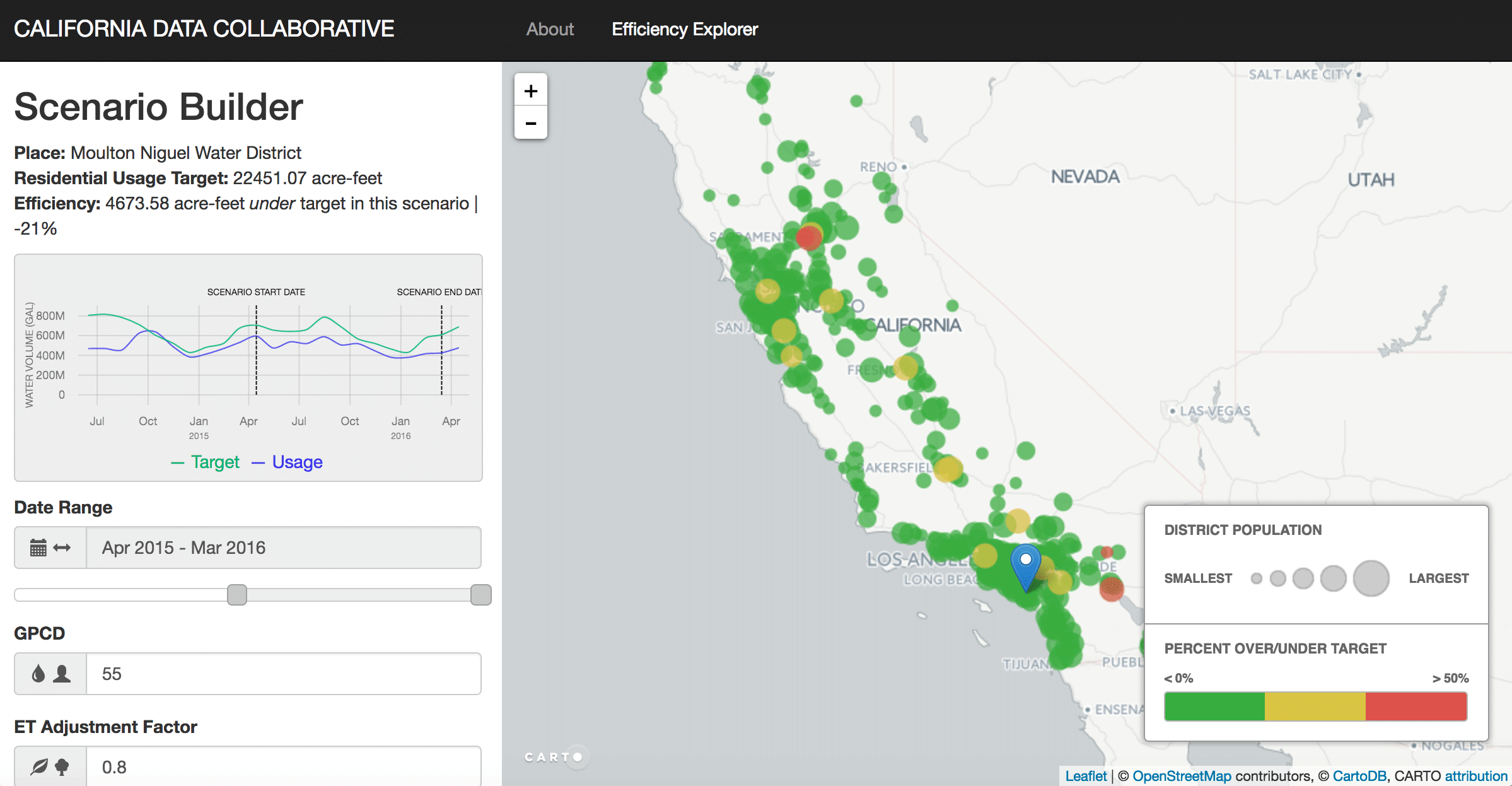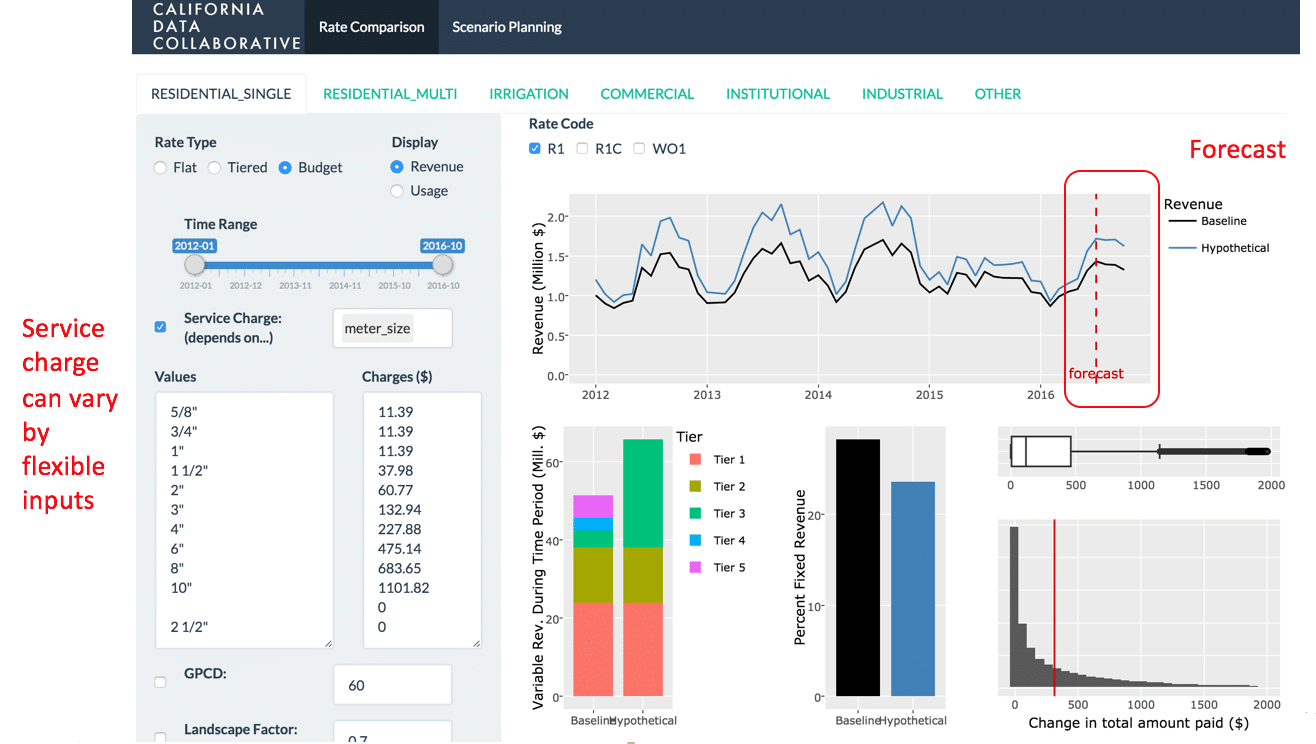Podcast: A new data infrastructure in CA
April 10, 2017
Podcast: Play in new window | Download
Subscribe: Apple Podcasts | RSS
How does California use its water? Not long ago this question wasn’t being asked, and when it was, there wasn’t a good answer. The California Data Collaborative stepped in to remedy this dearth of data on water in the Golden State. Today, this group is pioneering a new data infrastructure that supports both water management and the public good. Joining us on Freshwater Talk is founder Patrick Atwater. Listen to the full episode above or read a sampling of the interview below.
Q: What’s your background and how did you get into the water game?
A:  I grew up in California, I’m a fourth generation Californian. I spent a couple years in municipal finance looking at public infrastructure, so kind of a different angle into the data game and the water world. My first college internship was for the Metropolitan Water District of Southern California to conduct their Retail Price of Water Survey. I called around 200 water districts to figure out the actual price they were charging, and that always stuck with me. Why isn’t that just a Google search? I kind of saw where the future was. I went back to New York for a bit and got involved in a couple startups, went back to grad school and then there was this historic drought. When you see things like The New York Times asking, “Is this the end of California?” it gets your juices flowing. I wanted to come back here and do my part.
I grew up in California, I’m a fourth generation Californian. I spent a couple years in municipal finance looking at public infrastructure, so kind of a different angle into the data game and the water world. My first college internship was for the Metropolitan Water District of Southern California to conduct their Retail Price of Water Survey. I called around 200 water districts to figure out the actual price they were charging, and that always stuck with me. Why isn’t that just a Google search? I kind of saw where the future was. I went back to New York for a bit and got involved in a couple startups, went back to grad school and then there was this historic drought. When you see things like The New York Times asking, “Is this the end of California?” it gets your juices flowing. I wanted to come back here and do my part.
Q: You’re working with a good chunk of water agencies, but there are others that you’re not working with. Is getting them enrolled just a matter of getting everyone up to speed and interested?
A: Yes, we’ve grown from seven to twelve utilities that serve around 22 million Californians. We have a lot of large ones, but California’s water world is very fragmented. There are 411 major municipalities. The underlying data point that we’re looking at is metered customer use, and we’ve invested a lot in the underlying infrastructure and done a lot of the work to be able to streamline how we on-board a new utility. So if things go right, it takes us a matter of days to be able to standardize their data.

By having data integrated across utilities, CaDC analytics can be used to inform and understand the implications of prospective statewide policy using actual data that reflects the diversity of local circumstances and conditions.
Q: So what’s surprised you the most about working in this sector right now?
A: With 411 different local water retailers, it can be hard to create change. But, I think that beneath that, people often don’t see it coming from the outside, there’s a visionary tradition. People always talk about how water is so behind energy. The reality is that the California water world has a key opportunity. If we really go on the path we’re going on to having an integrated infrastructure with all of this water data in one place, that’d be something that’s very non-trivial and it’s kind of in the tradition of the water community recognizing big challenges and building things like the State Water Project, or pioneering water recycling in the 90’s.

Water managers have lost over $675 million of revenue in the current drought. The CaDC rate comparison tool provides a quick way to see the implications that a rate shift or a drought surcharge would have on revenue and typical customer bills. The tool quickly illustrates the impact of a shift before a utility hires a rate consultant and goes through a full, labor-intensive Prop 218 process.
Q: In terms of the California Data Collaborative, is that the essence of what you’re working on?
A: We’re integrating data across California’s many, many, many institutions so that you can recognize the reality that there’s one state and one water. If you have that data together, you can analyze and adapt.
Q: How long before California is truly using data and insight properly across those 411 retail distributors?
A: You know, I think it’s going to be a lot sooner than some people think. We launched almost exactly 12 months ago, and when we started with myself and another colleague out of grad school in a co-working space, and have since grown to a five-person data team. There’s a clear need, and if we were to talk about all of the different institutional challenges, we could draw up a very long list. But, when you take a step back, there’s a need for us as Californians and humans adapting to some of the water scarcity challenges that we face. Even with all the rain now, we want to be prepared for future uncertainty. I think you have the right leadership, particularly in California from the governor, to do some really non-trivial things.
#CaDC #California Data Collaborative #California drought #data #freshwater Talk #Patrick Atwater #podcast
